Gigabyte Aorus FI32U
Two-minute review
Of the slew of Aorus gaming monitors that have recently launched, the FI32U is arguably the one that offers the best compromise between sober specs and desirability. Large 40-inch (and above) monitors are always going to be a niche market, while the sub-30-inch units represent rationality rather than aspirational choices. This 32-inch beast sits between those two choices, and aims to be top of most gamers’ lists, but should they buy it?
The Gigabyte Aorus FI32U has an IPS panel that historically means it should be great for color reproduction, okay for motion smoothness and mediocre for contrast. However, this monitor actually has an SS IPS supercharged version which promises “splendid color and furious speed.” How does that work in practice?
In terms of motion smoothness, the 144Hz screen has both gray-to-gray and MPRT response times of 1ms and this, coupled with Aorus’ electronics, achieved negligible ghosting or blurring even in fast and frantic shoot-em-ups at 4K.
In terms of color, we were impressed. Although it ‘only’ supports 90% of the difficult DCI-P3 color gamut, which might put off designers seeking high levels of color accuracy, everything is rendered bright and vibrant.
At 350 nits, it doesn’t have the brightest rating – it certainly isn’t a proper HDR display – but it does get bright for office work, general use and gaming. However, the relatively low contrast rating of 1,000:1 can manifest when engaging in any dark multimedia, with details (and enemies) getting lost in shadows a little too easily.
Switching to the monitor’s FPS preset mode brightens dark areas up, but the Black Equalizer feature works best at destroying picture quality in order to reveal baddies hiding in the shadows.
It’s also very good for office work with a crisp and clean Windows 10 desktop being displayed and small fonts being rendered readably without distortion.
Ergonomics are good too. The two-piece stand is solid and clips together without tools. It tilts, swivels and rotates to generous degrees and can be raised and lowered by a full 13cm. There’s even a handle at the top should you want to carry it.
There are two HDMI 2.1 ports to allow 144Hz refresh rates at the full, 4K resolution (and 120Hz for current-gen consoles). There’s also DisplayPort 1.4, two USB-A 3.0 ports, plus USB-B and USB-C.
The latter can be used as a KVM switch whereby you keep the keyboard and mouse attached to the monitor and can use them with different computers – quite useful in these days of working from home when you might be regularly switching between home and work PCs.
The OSD is accessed by an intuitive joystick-button at the base of the screen or Gigabyte’s OSD SideKick software. This gives access to game-friendly features like crosshairs, PC component monitoring stats, timers and Picture in Picture – which is useful for following walkthroughs or locating any streamers you might be playing against.
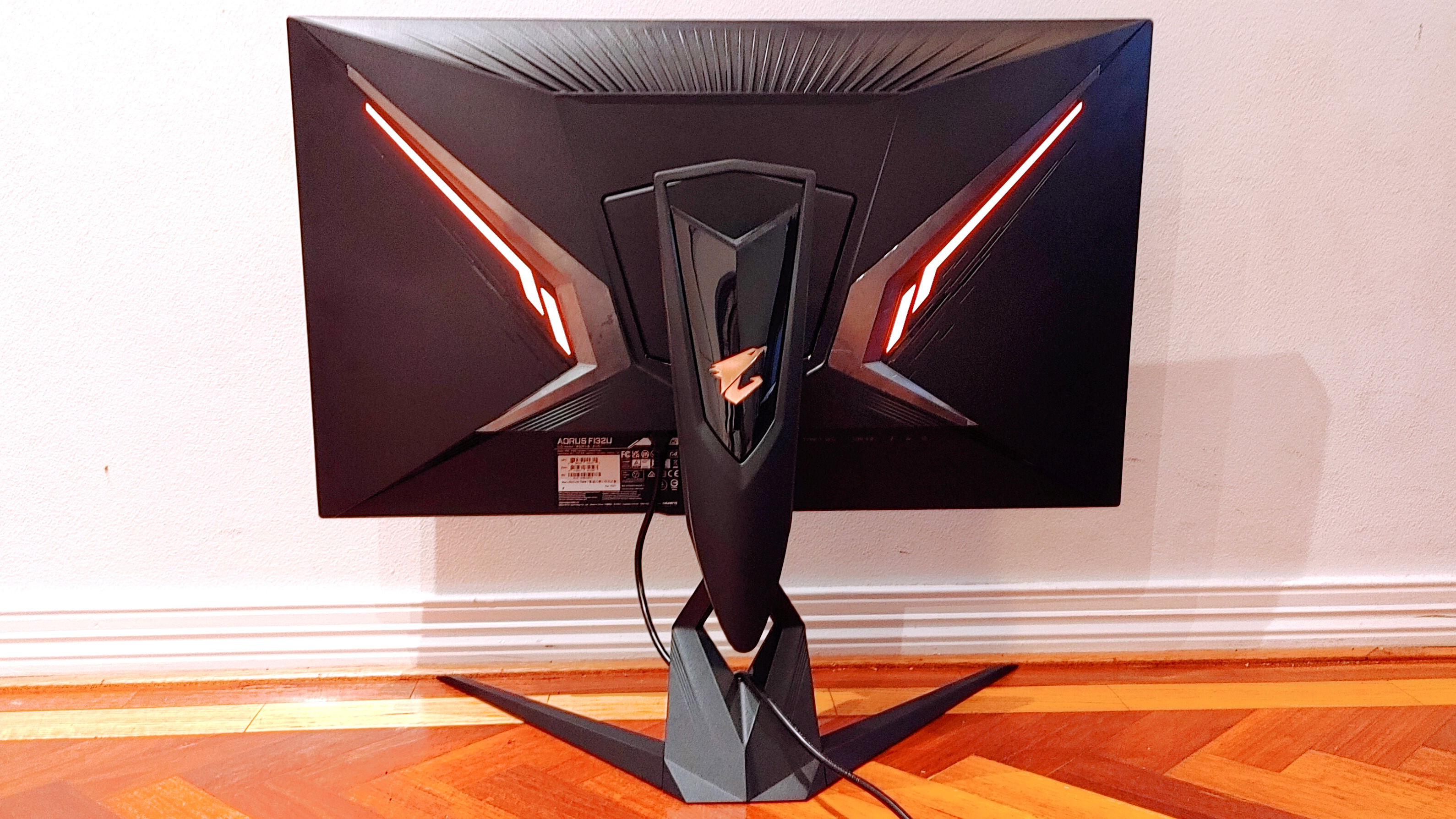
Price and release date
The Aorus FI32U gaming monitor is available now in the US and Australia where it costs $999 and AU$1,499 respectively. Stock issues have apparently delayed release in the UK.
Design
We’re big fans of easy-to-assemble monitor stands, and the Gigabyte Aorus FI32U has one. The base is like a spiky boomerang that an Australian ninja might use and utilizes a single, hand-screw to affix to the stand. The stand meanwhile uses two clips to securely affix to the screen. What you’re left with is a very solid support system.
It offers a great degree of adjustability too. There’s -5°to +20° of tilt, it swivels -20°+20° and it pivots 90°. There’s also a generous 130mm of height adjustment. At the top of the stand is a carrying handle. We’re not sure that many people will need to use it regularly but it’s there and will support the entire monitor’s 10.9kg bulk.
It’s also worth noting that the stand integrates strips of Aorus’ Fusion RGB lighting which complement the rear-of-the-panel’s RGB-lit angel wings. While we’re not sure many people will all this, you can appreciate the glow in a dark room.
The Aorus FI32U’s IPS panel has a very thin bezel but it also has a half-centimetre dead zone around the screen which may look ugly when tiling. That said, who on earth tiles multiple 32-inch monitors in the first place?
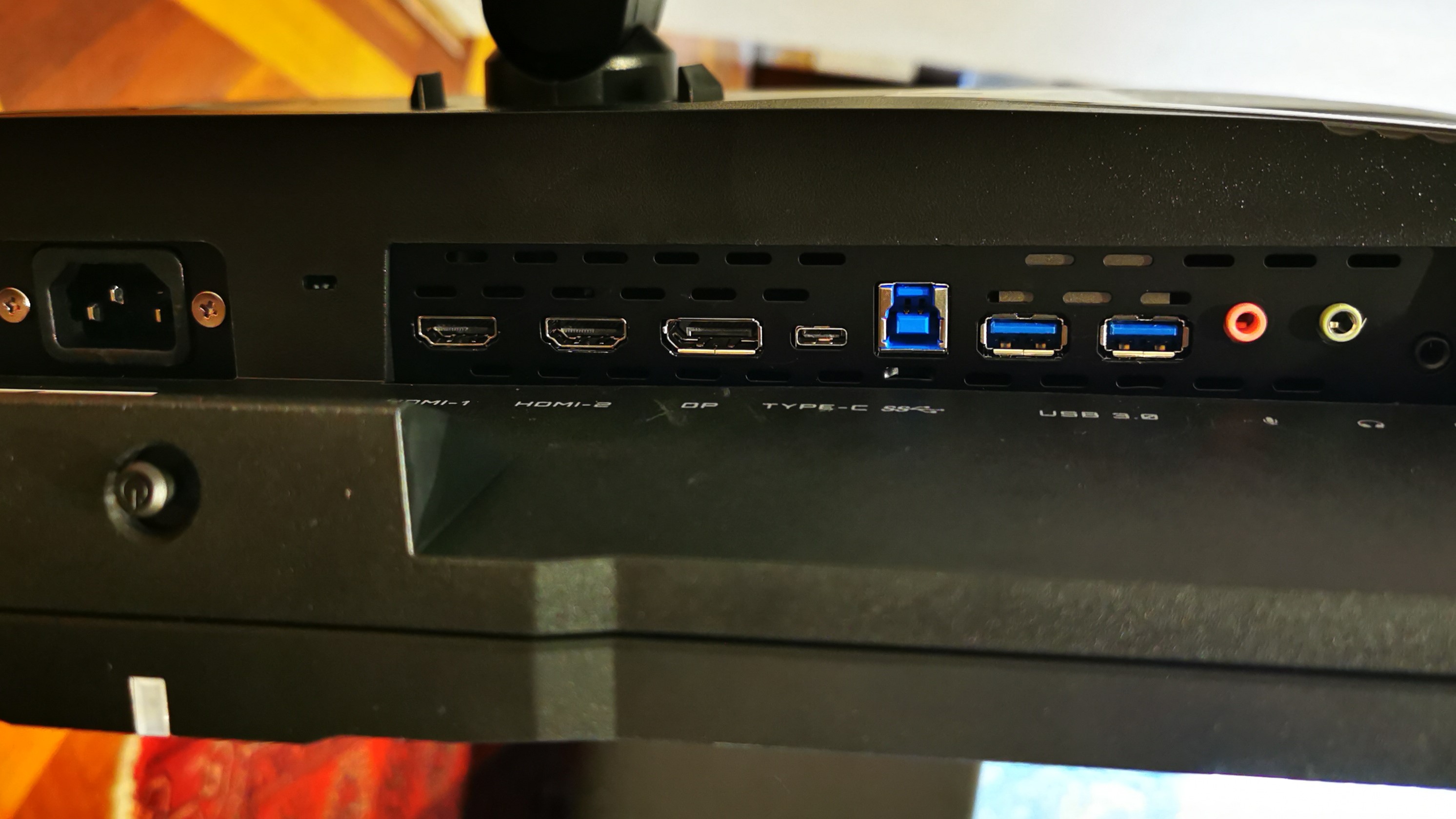
Features
As with Aorus’ other, new gaming monitors, there are a bunch of gaming features built-in. Black Equalizer is a feature that annihilates picture quality and contrast to help reveal enemies hiding in shadows and is useful considering the screen’s limited dynamic range.
There are a variety of on-screen crosshairs to choose from which can be useful in games like Call of Duty (Hardcore Mode) when you’ve only got iron sites and scopes available. Picture-in-Picture (and Picture-by-Picture) mode is useful should you want to play a game while following a walkthrough video. Also, if you’re that way inclined, you can use it to locate your enemies if they’re streaming at the same time.
Six-axis color controls allow you to adjust red, green, blue, cyan, magenta and yellow plus there are the usual pre-set modes.
Lockdown has meant we’ve become particular fans of the KVM function that lets you connect a single keyboard and mouse to the screen and switch between, say, your main PC and work laptop utilising the USB-C and USB-B ports.
Finally, there are many display options including countdowns, timers, hardware information and technical display details.
Everything can be easily and intuitively accessed via the joystick-button at the base of the screen or via Gigabyte’s OSD Sidekick software.
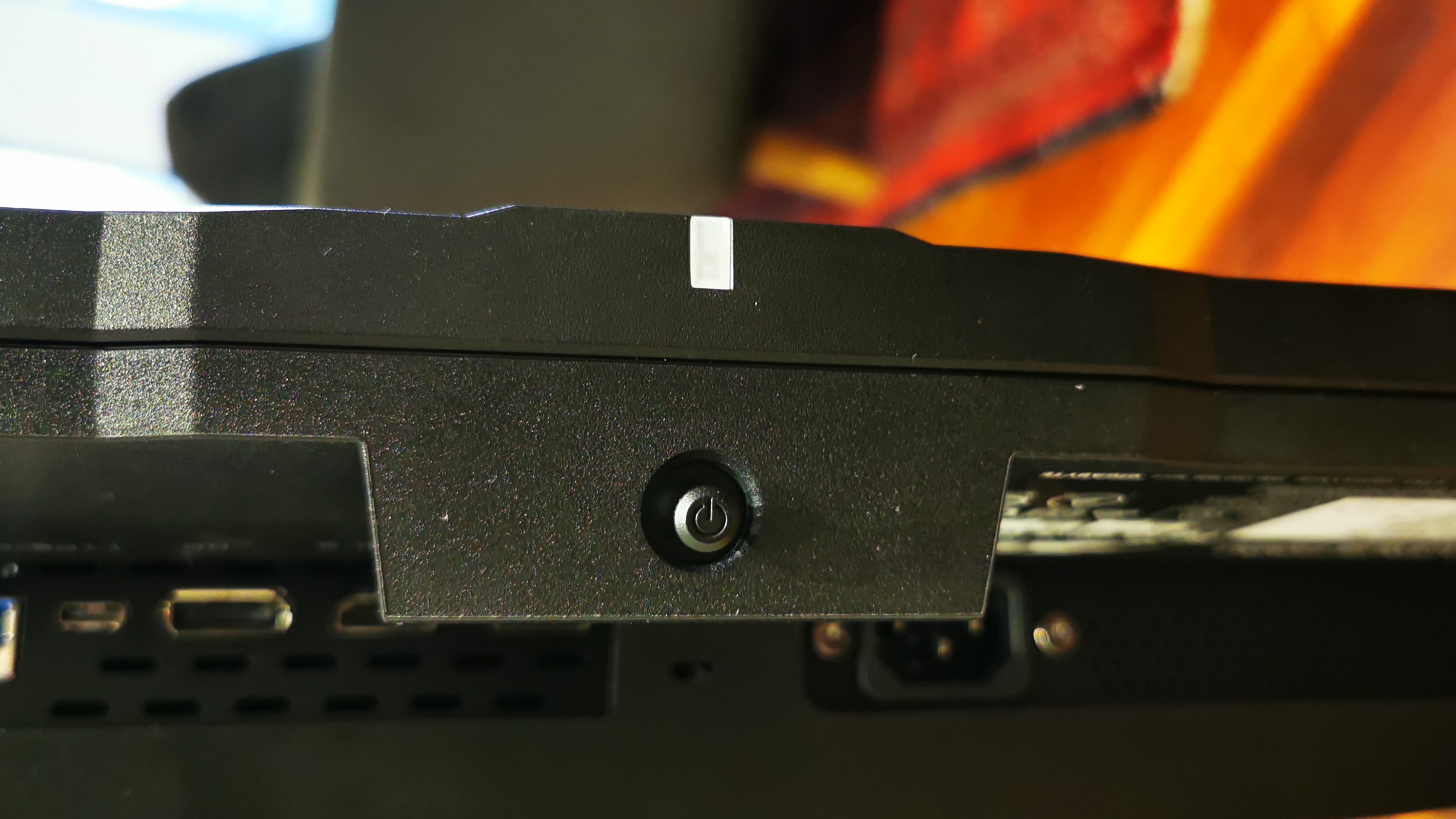
Connectivity
All connectivity ports are positioned on the underside of the screen. There’s a DisplayPort 1.4 socket, two HDMI 2.1 ports, two USB-A 3.0 ports, USB-B, USB-C, two 3.5mm audio jacks plus an IR Remote. HDMI, DisplayPort, USB-C and USB-B cables are included.
Performance
It’s very hard to make use of a full, 4K resolution at 144Hz: you don’t just need a DisplayPort 1.4 connection, it needs to support DSC as well. The problem here is that such a connection only exists on beefy Nvidia RTX 20-series, 30-series and AMD Ryzen 5000-series cards that are all still hard to find. The two HDMI 2.1 ports will enable 120Hz refresh rates, which isn’t too much of a performance drop and is good for the latest consoles (which can’t go faster anyway).
The FI32U’s IPS panel inherently offers good color reproduction. However, this is Gigabyte's bespoke ‘SS IPS’ screen that's been turbo-charged to improve response time. It also has both a 1ms MPRT rating and a 1ms grey-to-grey rating.
Does it match the promised “splendid color and furious speed” in the marketing materials? It certainly makes a good fist of it. We noticed very little motion blur and ghosting when it came to fast-and-frantic shooters and driving games. It can’t match the supreme response speeds of a TN monitor for top-level, competitive gaming but the color performance is way better in return.
While some top-level designers may lament its color accuracy and color-gamut support, it’s worth remembering that this is a gaming monitor first and foremost. Frankly we were very impressed with the vibrant colors on offer for all forms of multimedia.
We did notice some slight gradients in color transitions. This got noticeably worse with dark content where monochromatic gradients were blighted by obvious steps.
The 350-nit brightness is certainly some way behind the 1,000-nit peaks of its HDR rivals, but you wouldn’t lament the lack of light under ordinary usage. Nonetheless, it can’t match a proper HDR display when it comes to bright images popping off the screen.
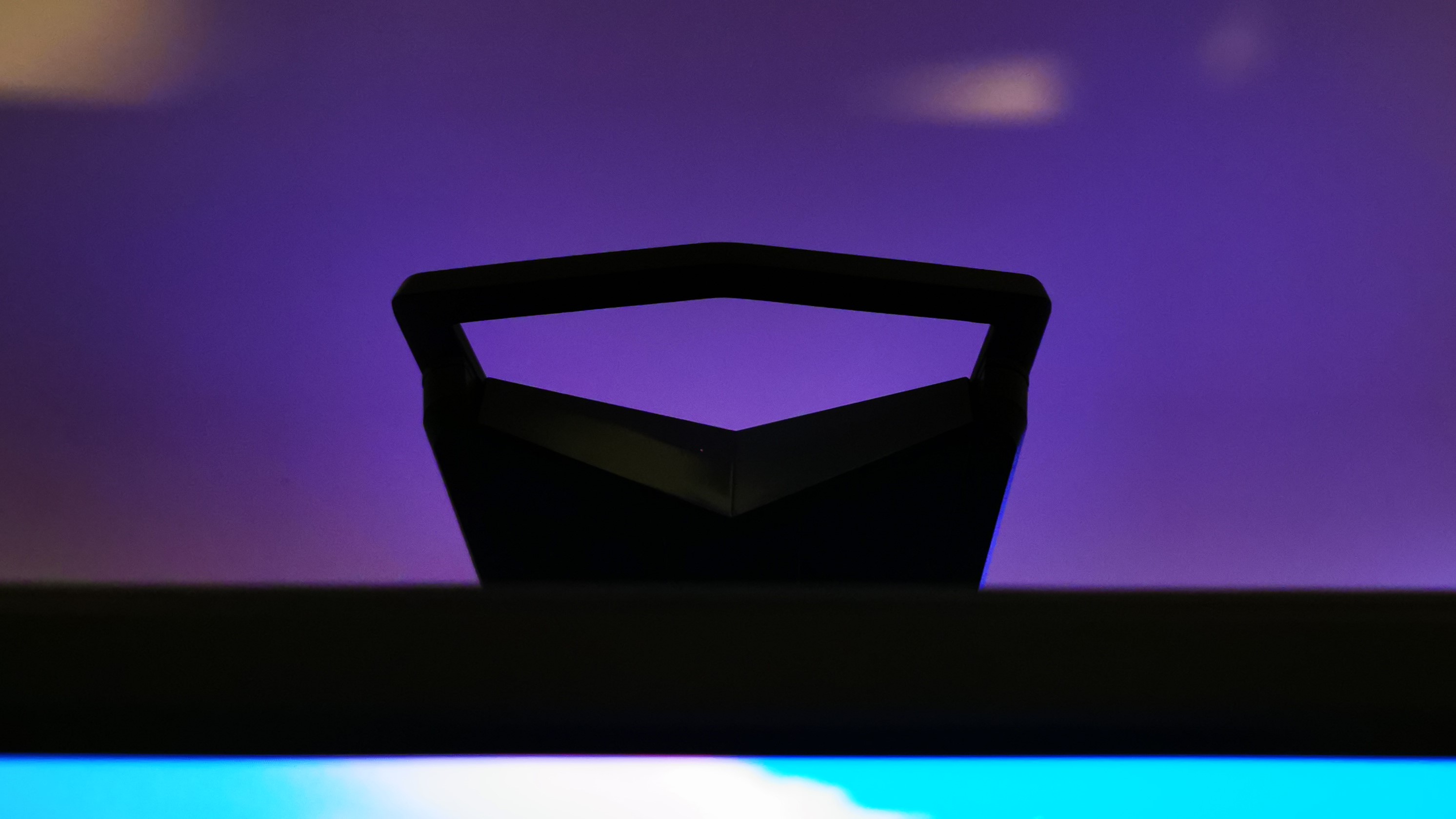
The screen has an HDR setting but this was haphazard when we tried it. Turning it on could bleach the entire screen and make everything look washed out. Turning it off could do the same.
In fact, the whole dynamic range of the screen (with its mediocre 1,000:1 contrast ratio) can quickly make itself evident when watching content with both bright and dark areas – details quickly go missing in both. This can be addressed when gaming by using the adjustable Black Equaliser setting which brightens up dark areas to reveal any hidden enemies. Choosing the FPS pre-set mode can do likewise.
The matte screen isn’t blighted by reflections and it fends off glare very well. However, on a dark screen with a bright object moving around, you can be reminded that the backlighting isn’t the most sophisticated.
If a sizeable, bright object is moving around at the bottom of the screen, you’ll see bright, light-leakage, from-top-to-bottom following it across the screen. However, this really only affects niche types of content and is only annoying when watching that in the dark. That all said, there’s certainly noticeable light-leakage on a pure-black screen – especially in the corners. Display purists and those who watch a lot of movies with letterbox bars might want to look elsewhere.
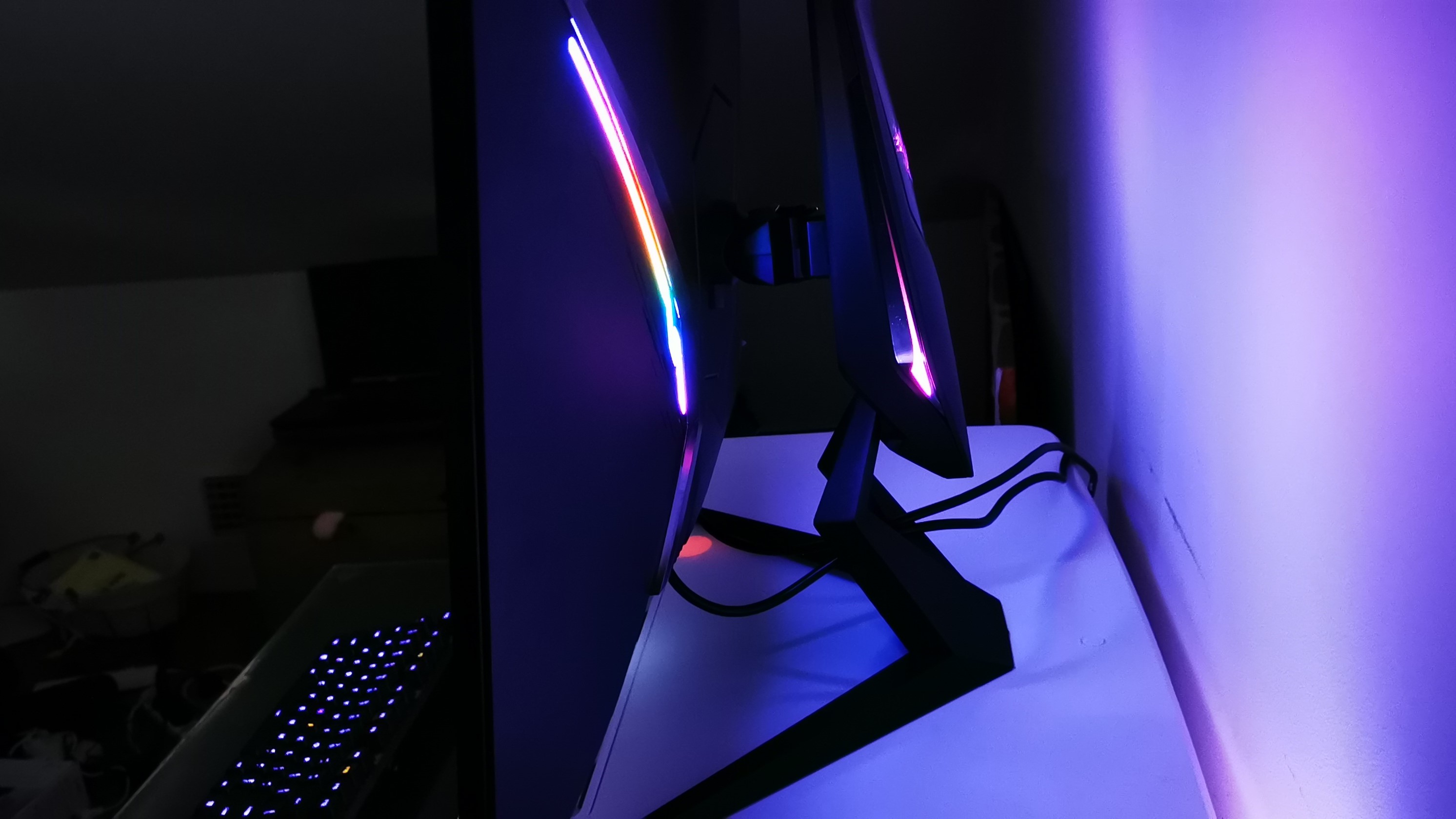
Unlike some gaming monitors, the Windows 10 desktop is rendered crisply and clearly and it’s comfortable to work upon all day. The 32-inch, proper 4K resolution means multiple Windows can be fully opened at once which is great for productivity.
Ultimately, though, while it might not be the best technical performer, if you’re wanting a big, 4K screen for gaming and work, you won’t be disappointed by what the FI32U has to offer.
Should I buy the Aorus FV43U gaming monitor?
If you want a fully-featured, large-screen, 144Hz proper 4K gaming monitor that won’t break the bank, the Aorus FI32U is well worth your consideration. While its contrast performance is mediocre and HDR is missing altogether, when it comes to displaying gaming content there’s few who’d find it wanting.
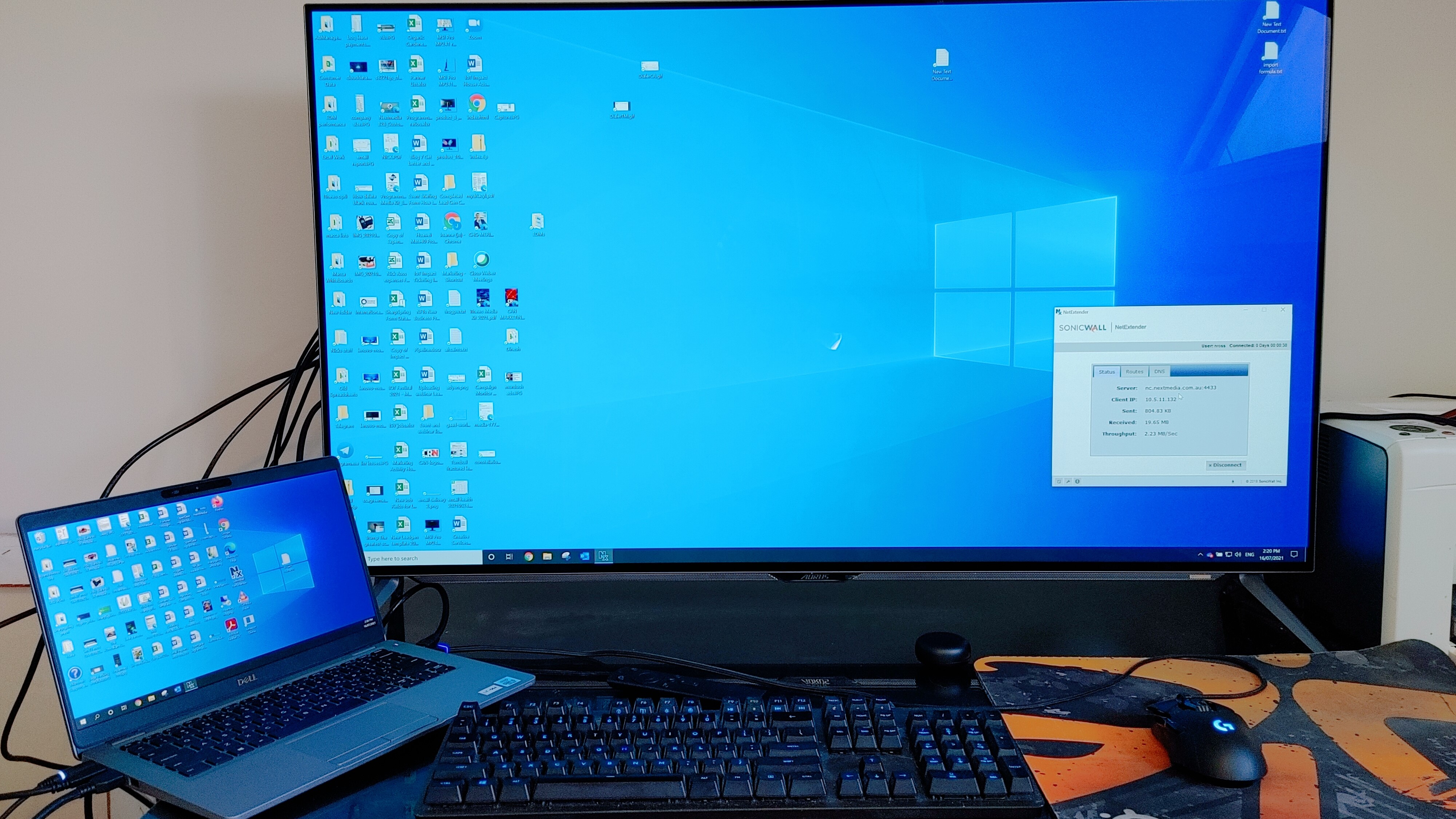
Buy it if...
You want a big, practical screen
It’s very good for both gaming and highly-productive office work.
You want 144Hz at 3,840 x 2,160 resolution
It’s hard to do properly, but the FI32U succeeds.
You don’t want to break the bank
While it’s not cheap, it’s half the price of uncompromising rivals.
Don't buy it if...
You want HDR
AAA titles won’t look as good as they can.
You want high contrast
Contrast is mediocre but fine for general gaming and multimedia.
You don’t have a beefy graphics card
144Hz at 4K is not possible unless you have a top-tier graphics card.
- These are the best gaming monitors
0 comments:
Post a Comment